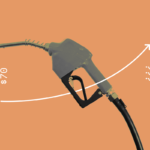By Jeff Weniger, WisdomTree Investments
Special to the Financial Independence Hub
If the term “IMO 2020” doesn’t resonate with you, pay attention: it could be front-page stuff soon.
The International Maritime Organization is putting fuel cleanliness standards in place on January 1, 2020. But the shipping companies have been caught flat-footed, despite years of forewarning. Their scramble could have a bigger effect on 2019–2020 petroleum markets than OPEC deliberations.
According to the U.S. Energy Information Administration, the shipping industry used 3.9 million barrels of crude oil per day in 2016, about equivalent to Canada’s total output. The fuel supply chain could be upended, because the “light sweet” crude oil that you find in Texas is going to be in demand, while the portion of Canada’s production that is “heavy” will want for bids.
That’s because of the pollution dynamics of the oil varieties. Think about what ships use: “bunker fuel.” Filthy, thick and viscous—one step above the tar-like stuff used to pave roads. An important component of this fuel — the enemy — is sulphur, which leads to acid rain, the destruction of ocean ecosystems and respiratory ailments. And the full-scale attack on this generation’s Big Tobacco is underway.
The regulations weren’t decided yesterday, but you wouldn’t know it from the shippers’ snail-like efforts at preparedness. Outside the “Emissions Control Area” standard for areas such as the coastal waters of North America and Europe, sulphur content must fall to 0.5% by January 1, 2020, for a ship to be allowed to set sail. In some jurisdictions, violators will even face jail time.
Figure 1: Sulphur Content: “IMO 2020”
Heavy Western Canada Select oil, with all that thick, sticky, high-sulphur bitumen, is exactly the variety of oil that, when refined, results in the kinds of fuels the IMO is essentially banning.
Remember when Canadian oil reached a US$50 discount to light sweet West Texas Intermediate oil last year (figure 2)? Alberta was gushing oil with no easy route to buyers. The province’s OPEC-like production cuts of 325,000 barrels per day, recently reduced to 250,000 barrels, are a temporary solution. It works, as long as nothing unexpected wallops the supply/demand dynamic. Continue Reading…









